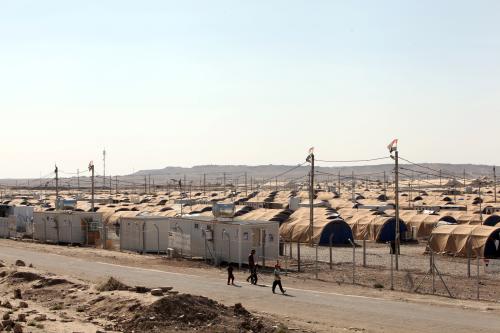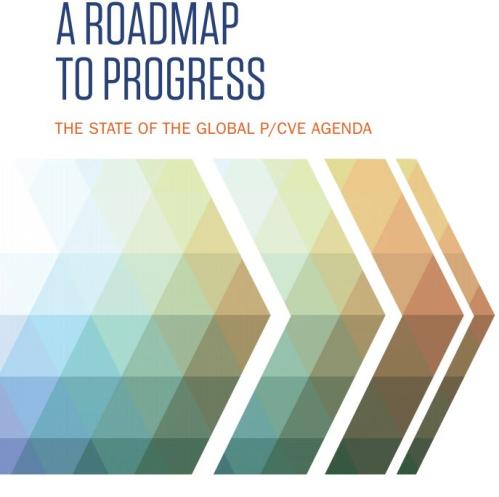When President Trump took office in January 2017, many assumed that the Obama-era countering violent extremism (CVE) initiatives — locally-led, non-kinetic programs to address drivers of or build resilience against extremist violence — were dead in the water. President Trump had a reflexive disdain for anything associated with his predecessor. Moreover, Muslim and civil liberties advocacy groups had long voiced critiques that CVE was securitizing communities and unfairly targeting Muslim groups, and there were reports that the Trump administration agreed with the critique from the right that Obama’s CVE — which focused on all forms of violent extremism and emphasized engaging and empowering communities — was too politically correct. Trump saw the real threat as “radical Islam.”
Within days of arriving in the White House, there was talk of renaming CVE “Countering Radical Islamic Extremism.” The administration rescinded funding for multiple CVE projects that had been awarded in Obama’s final days, and Trump’s first Department of Homeland Security (DHS) budget zeroed out any funds for maintaining the modest DHS CVE grant program that President Obama launched just prior to leaving office.
Yet today, more than three years since President Trump took office, and with last week’s DHS rollout of a $10 million successor to the inadequately-resourced Obama-era CVE grant program as a prominent if somewhat isolated example, the Trump administration’s bark on CVE turns out to have been worse than its bite.
Moving Beyond “CVE”
The Trump administration did eschew the CVE moniker, as anticipated. However, rather than replacing it with a term that explicitly linked it to “countering radical Islam,” wiser heads prevailed — at least within DHS and the Department of State. There were several distinct pivots away from CVE, which are actually steps in the right direction.
One, DHS specifically included both domestic terrorism and all forms of non-ideologically motivated targeted violence alongside ISIS and al-Qaida-inspired violence as primary concerns for its September 2019 “preventing terrorism and targeted violence” strategy. It also calls out “other forms of racially, ethnically, and religiously motivated violence that can overlap and intersect with terrorism.” Including targeted violence is a positive development as it enables law enforcement and civil society actors to move beyond a focus on specific communities (a common critique of CVE) and to adopt more of an “all-hazards” approach that builds common prevention strategies — including with those communities — which makes perfect sense from a public health perspective.
Yet, as DHS recently noted, although it “has moved away from the term countering violent extremism … CVE activities [under the Obama-era grant framework] fall under the umbrella of preventing targeted violence and terrorism.” In fact, in 2019, the DHS assistant secretary in charge of this agenda went so far as to state that these programs “will show us what works … There’s momentum to institutionalize a lot of what’s happening.” Readiness to build on the successes of some local programs under this framework is a far cry from what many expected in January 2017.
Two, rather than dismissing the preventative approach that formed a core part of CVE, the administration seems to have called for it to be strengthened. The 2018 National Strategy for Counterterrorism said more attention should be placed on prevention and that the United States would develop an international “prevention architecture to thwart terrorist radicalization and recruitment,” underscoring that “prevention works. It can save lives.” Of course, there is little evidence that they made any progress in developing such an architecture or building prevention capacities. Instead, the administration has focused the lion’s share of its counterterrorism attention on talking about the need to eradicate terrorists and the ideology it believes fuels them.
Domestically, the 2019 DHS strategy says that the best way to “enhance the efficacy of prevention programs is through a ‘whole-of-society’ approach” that includes the Department of Health and Human Services (HHS), the Department of Justice, the Department of Education, and other federal agencies, as well as states and cities. What’s more, it also emphasizes “partnerships with mental health professionals, social service providers, and civil society that can provide ‘off ramps’ away from terrorism and targeted violence, both protecting the American people and reducing the burden on the criminal justice system.”
Three, embracing yet another tenet of CVE, the DHS strategy calls for a “renewed effort to build and sustain the resilience of American communities.” This includes an emphasis on “locally-based solutions that identify signs of risk before acts of terrorism or targeted violence can be carried out” as well as “off-ramping susceptible individuals before they mobilize to violence.” Nevertheless, it remains to be seen how an administration led by such a divisive president can be a credible community resilience-building partner.
And four, although it was not until its third budget, the administration secured $70 million for DHS-led efforts to prevent terrorism and targeted violence, including $10 million (the same amount President Obama allocated, despite the rise in threat levels and an expanded framework) for what it described as an “evolution” to the Obama-era grant program. It even indicated it would seek double the amount of grant funding in its next (FY2021) budget. Moreover, DHS recently completed a comprehensive review of the initiatives implemented with the Obama-era fund to learn lessons.
A number of the findings in this review implicitly debunked some of the critiques of the Obama-era CVE efforts. For example, some in the “anti-CVE” crowd criticized the CVE program as being overly securitized and too focused on Muslim communities. DHS analysis found that the initiatives implemented under the program “have been inaccurately [emphasis added] described as counterterrorism or surveillance tools” and that some two-thirds of them in fact “focused on all forms of extremism (to include projects that also worked on targeted violence in general), many of those also had specific activities related to domestic terrorism.” Moreover, reinforcing a CVE best practice, DHS also concluded that “[a]pproaches that focus on or have the capacity to target a broad array of risk factors for terrorism and targeted violence [including violent extremism] are going to be the most flexible as the threat evolves.”
Although not mentioned in the above review, among other criticisms levied against the Obama administration’s CVE efforts include the limited resources it dedicated to the issue, particularly when compared with the expenditures of other developed countries facing similar threats. For example, $10 million is the same amount the Dutch government provides for CVE projects in a country that has 307 million fewer people than the United States. This led some to question the depth of its commitment to the agenda.
While there are still some 300 days left in the Trump administration, it’s clear that the worst fears regarding CVE will not be realized. In fact, the administration may even leave a relatively positive legacy behind on this particular issue. This includes moving beyond the polarizing CVE lexicon while incorporating CVE policies and programs into a wider framework that may be less likely to stigmatize certain communities. This may make it easier to advance a “whole of society” approach to addressing extremist violence that has become a bedrock of efforts to prevent violent extremism.
Gaps remain
Despite this surprising (albeit modest) progress on this agenda over the past three years, significant gaps remain. For example, President Trump let atrophy the inter-agency CVE task force established during the last year of the Obama administration to facilitate better coordination among various federal agencies and state and local actors. As a result, there is no standing mechanism to draw in non-law enforcement agencies such as HHS and the Department of Education, which have so far been reluctant to contribute, and to engage state and local partners around the country, whose involvement is essential.
Further, with the Obama-era leadership from the White House on this issue a thing of the past, there is no one to encourage, incentivize, and pressure non-law enforcement agencies from across the federal government to engage, and no one to oversee a clear division of labor among the different federal agencies involved. As a result, we can expect the promising language in the DHS strategy about a “whole of government” approach to remain aspirational, particularly given the lack of any U.S. government strategy for preventing terrorism and targeted violence at home.
With last week’s release of new request for proposals on terrorism prevention, the Trump administration deserves some credit for effectively continuing with the DHS CVE grants program of its predecessor (albeit under a different name). This is a belated and limited continuation, falling far short of what could have been accomplished over the past three years. This lacuna was magnified with the rise in extremist violence in the United States during this same period.
What’s more, for a law enforcement agency to be the only source of federal grant money in this space is short-sighted and at odds with one of the goals of DHS’s new strategy, namely getting mental health professionals, social workers, and grass-roots organizations more involved. A complementary small-grants program overseen by HHS thus merits consideration.
Finally, perhaps the most significant gap is the lack of any messaging from the White House on the threat of terrorism and targeted violence — and the steps required to address it — that amplifies the positive developments outlined above. As a result, this administration has been unable to build multi-stakeholder and multi-disciplinary coalitions within the federal government, with state and locals, with law enforcement, and with civil society, which could build on these helpful ideas.
Instead, it’s overstating the terrorist threats coming from across the Southern border, downplaying the threat of homegrown domestic terrorism (often contradicting U.S. government law enforcement and intelligence data), and, as has been suggested, “fann[ing] the flames of prejudice and embolden[ing] hate groups at home.” President Trump has done just the opposite: undermined any coalition-building efforts.
Although not as terrible as many expected (although, as with so many issues in the Trump-era, one tweet away from it getting worse), this administration has put forth a few good ideas, at least some of which could be foundations for the still lacking comprehensive U.S. strategy for preventing terrorism and targeted violence at home. But, it has proven it is ill-equipped to fully develop such a strategy, let alone effectively implement it for the public good.







Commentary
On CVE, the Trump administration could have been worse
But it’s still not good enough
April 7, 2020